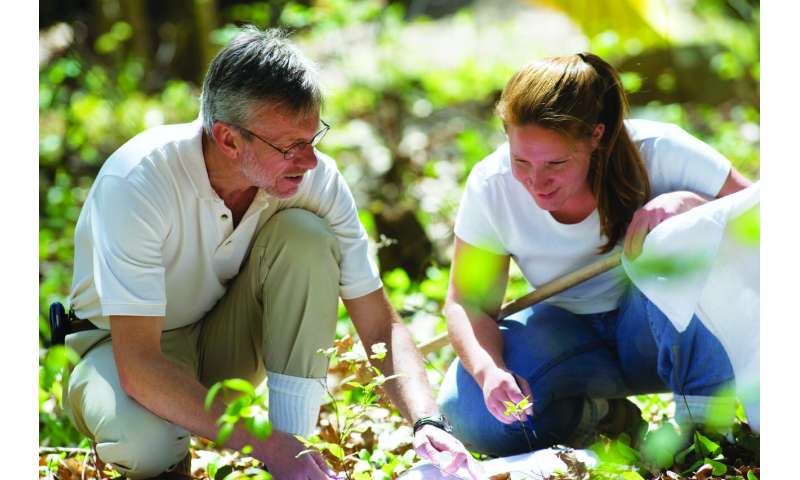Tick researchers seek to learn if you’re spending more time outdoors because of COVID-19 restrictions


In this time of pandemic, maybe you’re working from home, managing the kids and their school work, and you need a break. Off you go to the park, the trails or the woods for a respite. Because you might have more time, you also might be exploring new areas and trails and heading deeper into the woods.
Researchers from five universities, including the University of Rhode Island, want to find out if restrictions related to COVID-19 have increased individuals’ time outdoors and, in turn, their risk of coming in contact with ticks and getting the diseases they carry. One of those is the blacklegged tick, or deer tick, which carries Lyme and other dangerous disease-causing germs.
To gather information, the team is asking people across the country to fill out a 10- to 15- minute survey to see if people’s outdoor habits have changed. Researchers from Hollins University, Duke University and Clemson University have joined the University of Georgia and URI as part of the research team.
The study, “Investigating COVID-19 Impacts on the Epidemiology of Tick-borne Diseases in People and Pets”, is being led by Michael Yabsley, a faculty member at Georgia.
University of Rhode Island Professor of Public Health Entomology Tom Mather said this is an important national survey to understand how stay at-home restrictions may change people’s outdoor behaviors and practices, putting them at greater risk for developing Lyme disease and other serious illnesses associated with tick bites. Findings may suggest that self-isolation restrictions need to come with increased tick prevention education. An internationally renowned expert on ticks and the diseases they carry, Mather operates the TickEncounter website and TickSpotters service.
TickSpotters is a crowdsourced tick survey that gives people across North America the opportunity to submit photos of ticks they discover on themselves or their pets and receive back a tick identification confirmation, risk assessment, and best next practices to manage the tick bite and prevent future bites. The survey link was recently emailed to more than 9,000 recent users of TickSpotters along with various other groups, including dog owners, and social media networks.
“My colleagues and I were apparently seeing the same things as governments began imposing stay at home restrictions in mid-March; in particular, we saw an immediate jump in the number of people finding attached ticks,” Mather said.
“What we were seeing in mid-March with TickSpotters, when things really started to get locked down, was more than a quadrupling of daily submissions very abruptly. So our theory, which we are trying to test with this survey, is that people are probably spending more time outdoors since they have to stay home and avoid meeting in big groups.”
Mather said that even if people spent time outdoors before the COVID-19 outbreak, they may have more frequently stayed on paved walkways along streets and in parks.
“But as they had more time, they probably figured, ‘Hey, we haven’t been on that path or trail before, let’s check it out.’ So, they might be walking the dog for longer periods, going farther into the woods, but maybe without a complete knowledge of best tick prevention practices, or even that they needed tick prevention,” Mather said.
“While we haven’t yet had time to analyze the March-April tick submission data carefully, it seems that many more photo submissions than normal are showing up with partially- or fully-engorged ticks, which speaks to people not being well-educated about ticks where they live, or the need for repellents and daily tick checks.”
He said that about 2,000 people have already completed the survey, which will end in mid-May, but so far, many of the respondents are located in the southern U.S.
“We want to have as broad a geographic representation as possible,” Mather said “so, we are really looking for people in the New England region, where tick borne disease is quite prevalent, to complete the survey. I really encourage residents of this region to participate.”
Mather, who is a long-distance runner and former Boston Marathon competitor, said he was recently running on a dirt road in the local area.
Source: Read Full Article




